Nail Gun Buying Guide
Nail Gun Buying Guide
Introduction
Nail guns make light work of any large scale, repetitive nailing job. So, whether you’re an experienced DIYer or a tradesperson, it’s a handy tool to have in your box. But there are several types of nail guns available, all suitable for different tasks. So, it can be difficult to know which nail gun is best for you.
This comprehensive nail gun buying guide will help. It covers types of nail guns, how they work, their uses and features. It explains how to choose a nail gun and what type of nail gun you need for different jobs. It also gives advice on nail gun maintenance and highlights some key things to consider before buying. Finally, it answers some frequently asked questions. You can view our range of nail guns here.
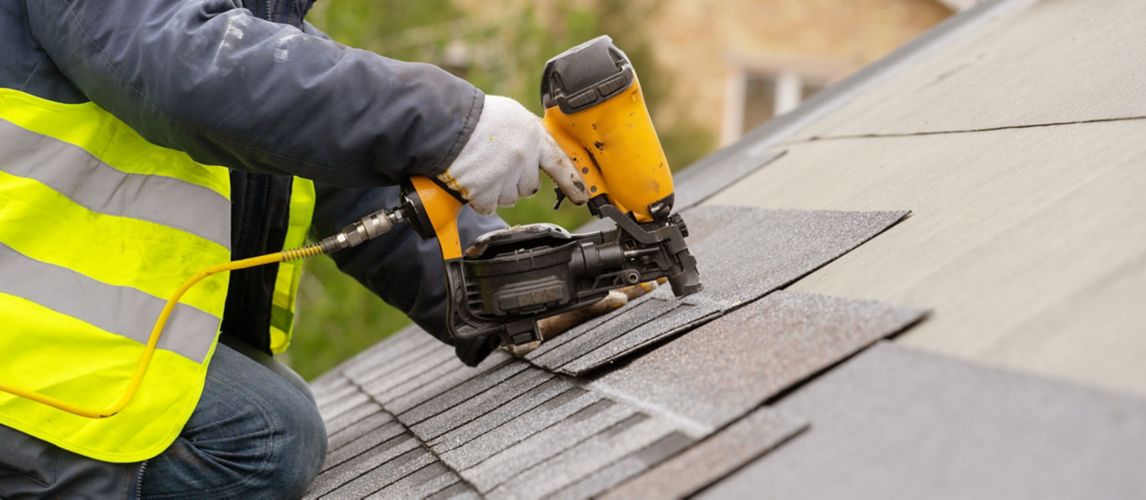
How Does a Nail Gun Work?
Nail guns are used to drive nails into tough materials in one swift, effortless action. Vastly reducing the time and effort it takes to do the job manually with a hammer. For this reason, nail guns are excellent for large-scale or repetitive nailing tasks such as laying decking or flooring, roofing, fencing, furniture making, etc.
Nail guns work using the power of electricity, gas or air. The gun’s magazine is loaded up with collated nails, and when the trigger is pulled, it fires the nail into the material it’s aimed at. A new nail is then automatically loaded via a spring, which pushes the magazine up.
How the nail is fired from the nail gun differs depending on how the tool is powered.
- How do electric nail guns work?
Electric nail guns run off the main's electricity supply. They consist of a rotating motor that holds back a powerful spring attached to a hammer. The spring is released when the trigger is pulled, driving the hammer forward with enough force to fire the nail. - How does a gas nail gun work?
A gas nail gun is powered by a battery and a gas canister. When the trigger is pulled, a spark created by the battery ignites a small amount of gas from the canister to cause a mini-explosion. This explosion pushes a hammer, which drives the nail out of the gun. - How does an air nail gun work?
An air nail gun works in a similar way to a gas nail gun, except, rather than an explosion pushing the hammer to fire the nail, it uses a powerful burst of pressurised air.
How to Choose a Nail Gun
The most important factor to consider when choosing a nail gun is what task you will use it for. This will determine the type and size of nails you need to drive and, therefore, the type of nail gun you need. Also, consider whether it needs to be portable and if it's for infrequent DIY use or constant work use. This will help you decide between a corded and cordless model and how the nail gun is powered.
1st fix or 2nd fix nail guns explained
There are several types of nail guns available which we will explain later in this nail gun guide. But they all come under one of these two categories: 1st fix and 2nd fix.

1st fix nail guns are designed to complete rough woodwork and construction jobs, i.e., jobs where the nails will be hidden, such as framing, roofing and flooring. Nail guns that fall into this category are the most powerful, and they tend to use large nails. These nail guns are known as framing nail guns, although other types of nail guns fall into this category too.
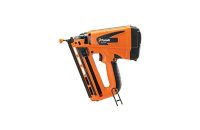
2nd fix nail guns are designed to complete more refined ‘finishing off’ tasks, i.e., jobs where the nails are visible, such as furniture making, securing skirting boards or door frames, etc. The nails used in these guns tend to be small and discreet, with small heads. These nail guns are known as finishing nail guns, although other types of nail guns fall into this category too.
Corded or cordless?
There are two types of corded nail guns: Electric nail guns, which are plugged into an electrical socket, and air nail guns, which are attached to an air compressor via an air hose. Corded nail guns tend to be smaller and lighter than cordless models, and they are ideal for small jobs where a power source is easily reachable. But the cord makes them unsuitable if you need to move around a lot while you work or if no power source is available.
Cordless nail guns are powered by a rechargeable battery, and some have a gas canister, while others don't. The absence of a cord means these nail guns are ideal for use in areas with no power source. However, the battery and gas canister make these nail guns significantly heavier than the corded models, which may be a problem if you plan to use them for long periods or for overhead applications. You are also limited to how long you can use the nail gun by the battery capacity.
Air, electric or gas
Nail guns can be categorised by the fuel they use to power their firing action. There are three categories: air, electric or gas.
Air nail guns are linked up to an air compressor via a hose. When the trigger is pulled, a powerful burst of air drives a hammer which forces a nail out of the gun. Air nail guns are often favoured over electric models because they are safer to use in certain areas where an electric tool could pose a risk, i.e., in damp areas or where there are combustible gases.
Electric nail guns run entirely on electricity, which means they must be plugged into a socket. When the trigger is pulled, a rotating motor releases a spring which drives a hammer to force a nail out of the gun. Electric nail guns are ideal if you only need to use the nail gun in one location, and you can use them for as long as necessary without the worry of them running out of power.
Gas nail guns are powered by a rechargeable battery, and they contain a gas canister. When the trigger is pulled, an electrical spark ignites some of the gas, and that pressure pushes a hammer which forces a nail out of the gun. The advantages of gas nail guns are that there are no cords, so they can be used anywhere, and they drive larger nails into hard surfaces with ease. But they are heavy, and the gas canisters need to be replaced when they run out, which adds additional costs.
Angled or straight magazine angle
All nail guns have a built-in magazine (the part where the nails are loaded), and the magazine can be angled or straight. Note that the angle has nothing to do with the angle at which the gun fires nails into the workpiece.
A straight magazine holds the nails at 90° to the drive assembly (the part that contains the hammer that drives the nails). In contrast, an angled magazine holds the nails at an angle. The degree of the angle can vary between nail guns, ranging from 15-34°. These different angles exist to allow you to use each nail gun differently. For example, the higher the angle, the tighter the space the tool can get into.
The magazine in a nail gun also varies in how the nails are loaded. A stick nail gun takes nails in a single flat row, held together by a thin layer of glue. And a coil nail gun uses a long flexible string of nails inserted into a round holder. Coil nail guns usually hold more nails than a stick model.
Types of Nail Guns
This section of the nail gun buying guide looks at the different types of nail guns and explains what jobs they're best used for and what power types they are available in.
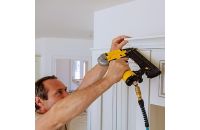
Framing nailers
Framing nailers are 1st fix nail guns used for rough woodwork and construction jobs such as fencing, decking, timber frame erection, stud work, etc. They can fire nails up to 90mm long, with diameters of up to 3.8mm, although the exact nail size each nail gun can fire varies. Framing nailers are designed for high-speed and high-power to fix large pieces of material in place. They can be powered by air or gas/battery, or battery-only models are also available.
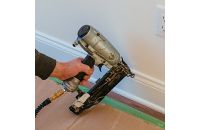
Finishing nailers
Finishing nailers are 2nd fix nail guns used to complete more refined 'finishing off' tasks, i.e., jobs where the nails are visible. They can fire nails between 15-64mm long, although the exact nail size each nail gun can fire varies. Finishing nailers are ideal for finishing carpentry work, mounting skirting boards, tongue and groove panelling, dado rails, etc. They are available in all power types.
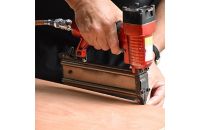
Brad nailers
Brad nailers are another type of 2nd fix finishing nailer. They are also used for finishing tasks, but they use shorter (between 6-63mm long) and thinner nails (called brad nails) that are either headless or have narrow heads so they can be embedded in materials. This makes them ideal for fixing lightweight or more delicate materials than a standard finishing nailer. Depending on the size of the nail used, brad nailers are suitable for fixing skirting boards, furniture making and any project where precision is required. They are available in all power types.
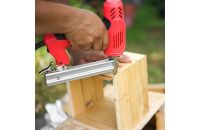
Pin nailer
Pin nailers are the most delicate nail guns available. They are 2nd fix nailers used for precise finishing work in carpentry. They fire thin 15-35mm long pin nails that don't have much holding power, so they are mainly used for holding glued materia
Other types of nailers
There are a few other types of nail guns to be aware of:
- Roofing nailer: 1st fix, heavy-duty nail guns, specifically designed for professionals to carry out roofing tasks.
- Flooring nailer: 1st fix nail guns, specifically designed to lay tongue and groove floorboards.
- Staple gun: 1st fix gun that fires staples rather than nails. They are generally used for upholstery projects and carpet fitting. Staple guns vary in the size of the staples they can fire. Staple sizes include heavy-duty wire (25-50mm staples), medium wire (10-38mm staples) and wide crown (16-38mm staples).
Nail Gun Uses
Nail guns have a wide range of uses for both DIY and professional tasks, and they are most useful where a lot of nails are required to be inserted at once.
The table below lists some common uses for nail guns and indicates which types of nail guns are best suited for the task.
|
Task |
Recommended nail gun type | ||||||
|---|---|---|---|---|---|---|---|
|
Framing |
Finishing |
Brad |
Pin |
Roofing |
Flooring |
Stapler | |
|
Architraves |
✔️ | ||||||
|
Baseboards |
✔️ | ||||||
|
Beading |
✔️ |
✔️ | |||||
|
Carpet fitting |
✔️ | ||||||
|
Crown mouldings |
✔️ |
✔️ | |||||
|
Cladding |
✔️ | ||||||
|
Dado rail |
✔️ | ||||||
|
Decking |
✔️ | ||||||
|
Fencing |
✔️ | ||||||
|
Flooring |
✔️ |
✔️ | |||||
|
Furniture making |
✔️ |
✔️ |
✔️ | ||||
|
Joists |
✔️ | ||||||
|
Noggin |
✔️ | ||||||
|
Panelling |
✔️ | ||||||
|
Roof battening |
✔️ | ||||||
|
Roofing shingles |
✔️ | ||||||
|
Skirting boards |
✔️ |
✔️ | |||||
|
Soffits |
✔️ | ||||||
|
Stud work |
✔️ | ||||||
|
Timber frame erecting |
✔️ | ||||||
|
Tongue and groove panelling |
✔️ | ||||||
|
Truss work |
✔️ | ||||||
|
Upholstery |
✔️ | ||||||
|
Window casings |
✔️ | ||||||
Nail Gun Features Explained
When buying a nail gun, there are various features and functions to look out for:
-
Nail adjustment: this feature allows you to change the size of the nail the gun accepts, allowing you to complete a wider range of tasks.
-
Depth adjustment: this feature allows you to adjust the depth at which the nails go into the material. This is useful for counter-sinking nails.
-
Jam feature: this feature allows quick and easy access if you need to clear a jammed nail from the tool.
-
Exhaust: this feature applies to air and gas nail guns. The exhaust can be adjusted to direct where unused compressed air or gas is expelled.
-
Connector: this feature applies to air nail guns. A swivel connector is used to connect the air hose to the tool. It rotates or swivels to help eliminate kinking and compression of the air hose.
-
Case: some nail guns come in a case that can also be used to store nails, keeping everything stored together safely.
-
Trigger: the trigger size varies on nail guns. The larger the trigger, the better for holding the tool for long periods with gloves on.
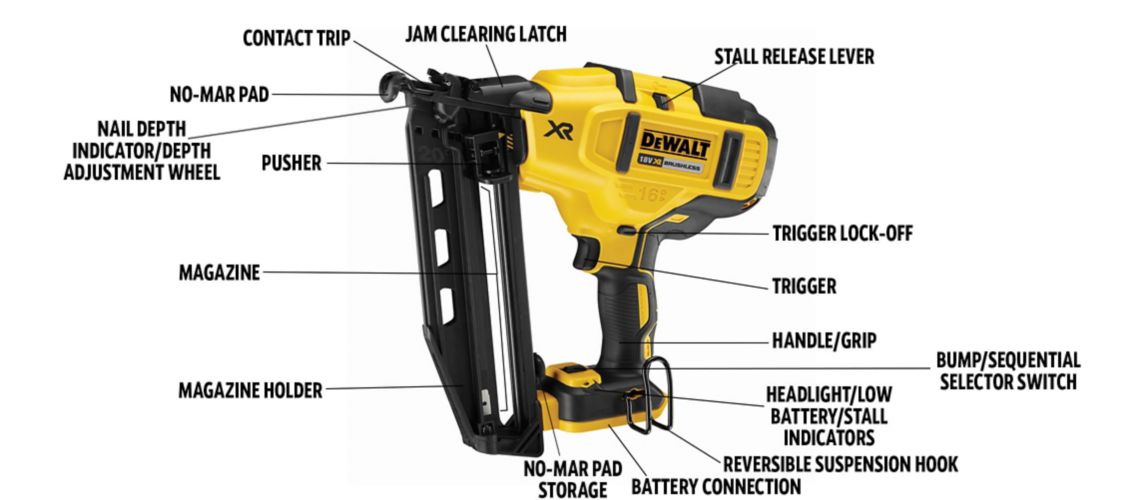
What Nail Gun to Use for Different Jobs?
This section of the nail gun guide answers some more questions about what type of nail gun you need for specific jobs.
-
Can you use a nail gun for composite decking?
Nail guns are not recommended for fixing composite decking as they tend to cause splitting and cracking in composite boards. -
Can you use a nail gun on concrete?
You can use a nail gun on concrete, but it must be a nail gun specifically designed for use on concrete. -
What nail gun to use for skirting boards?
You can use a finishing nailer or a brad nailer for skirting boards. A brad nailer will give you the best finish as it typically uses more discreet nails than a finishing nailer. However, a finishing nailer will have more holding power if the skirting board is heavier or bulkier than average. -
Can you use a nail gun on PVC trim?
Nails aren’t the best way to secure PVC trim, but they can be used. Use a finishing nail gun with 15-gauge nails. -
What nail gun do I need for fencing?
As the final finish of fencing doesn’t need to be particularly refined, you can use a framing nail gun. -
What nail gun for cladding?
You need to use a framing nailer for cladding to give you the best holding power.
Maintenance of Nail Guns
It's essential to ensure your nail gun is appropriately maintained to ensure safe use and long life. Here are a few tips, but always check the tool's instruction manual as maintenance between different nail guns and brands does differ:
- Regularly lubricate the moving parts to reduce friction
- Always use the recommended nails
- For air nail guns, ensure you use a compatible air compressor
- Avoid moisture and cold weather
- Clean the nail gun after use to remove dirt and debris
It's also important that your tool is stored correctly and safely. Ensure it's disconnected from its power source after use and discharge any residual air from an air nail gun. Remove the nails for storage and keep the nail gun in an airtight case (to avoid moisture) in a warm place (particularly in winter).
Key Considerations When Buying a Nail Gun
Here are a few more things to consider before buying a nail gun:
-
What nail gauge do you need?
Nail gauge refers to a nail’s thickness. The most common sizes used in nail guns are 15, 16, 18 and 23, although other sizes are used too. The higher the gauge number, the thinner the nail is. Every nail gun will only be able to take one gauge size, although the length of the nail can vary. As a guide, 15 and 16 gauge nails are used in finishing nailers, 18 gauge nails are used in brad nailers, and 23 gauge nails are used in pin nailers. -
What power source is available when using the nail gun?
To help you decide whether you need an electric, battery/gas or air nail gun, think about where you will use it, and what power source is available. For example, if you will always be near a plug socket, you can use an electric model. However, if there is no socket, or you want to move about with the nail gun, a battery/gas model is ideal. To use an air nail gun, you need to be connected to an air compressor. There are electric and petrol/diesel air compressors, so your choice will depend on whether a power socket is available for the air compressor. -
What nail gun weight is best for you?
It’s important to consider the weight of a nail gun if you plan to use it for prolonged periods or above head height, as a heavy tool will cause fatigue. Electric and air nail guns are the lightest types. Battery-powered nail guns are heavier, but they vary depending on the size of the battery. So, if portability is required, choose a model with a small battery. -
Do you have compatible nails, brads, staples or pins?
All nail guns take specific sizes of nails, brads, staples or pins. Each one only takes one nail gauge size (indicating the nail's thickness) but can usually take a range of lengths. Using the wrong type will damage your tool, so always take care to check. -
Have you taken the correct safety precautions?
Nail guns are dangerous tools, so you must know how to use a nail gun safely. For example, wear PPE (particularly goggles) and be aware of trailing cables and other people around you. Also, keep your finger away from the trigger while you're not driving nails to prevent accidental discharge. And with air and gas models, ensure the exhaust is directed away from you.
